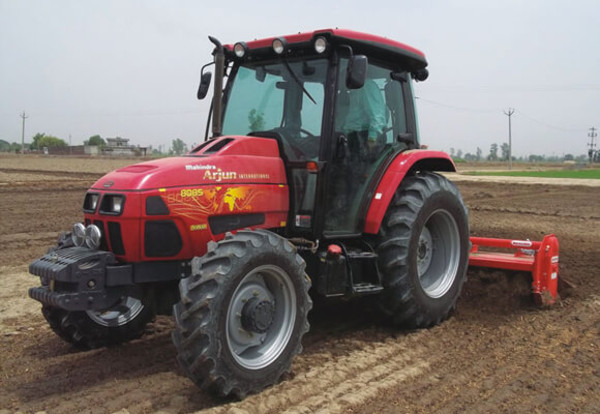
Irrigation and agricultural machinery to overcome "meteorological variables"
The presence of the monsoon and the variables linked to the performance of rainfall affect the productivity of vast regions of India. The government projects and the initiatives for the development of water supply and mechanization aim to increase agricultural productivity by reducing the dependence on weather trend
For years India has represented on a global scale one of the reference markets for agricultural mechanization and in particular for tractors, with 2.6 million units sold in the 2009-2013 period. In 2014 the country continued to be the leading market in the world, with regard to tractors, although there was already a first decline in sales. This year, contrary to the expectations, the segment has recorded a substantial decline, estimated at about 20% within a more general slowdown in the market of agricultural machinery which, although difficult to quantify, is perceived with the same order of magnitude. This decline can be attributed directly to the lower productivity of the fields and consequently the lower disposable income of farmers.
The main cause of the lower agricultural production is the increasing unpredictability and scarcity of rainfall, in particular of that linked to the southwest monsoon, the wind reaching the Indian subcontinent from June to September, to which is connected the most of the annual rainfall. In a country where more than the half of cultivations still depends entirely on rainfall for water supply and in which the livelihood of more than 60% of the population depends on agriculture, this deficit caused, and still does, huge problems on a socio-economic level.
In 2014 the rainfall was the 88% of the normal level and this resulted, according to the estimates of the Ministry of Agriculture for the Kharif crop (ie the crop carried out during the monsoon season), in the fiscal year April 2014 – March 2015, in significant decreases in production, as for example the 7% related to foodgrains (rice, grain, cereals, etc.). For 2015 the situation does not seem better: the India Meteorological Department, at the end of the season, announced rainfall lower than 14% than the average nationwide (even 17% in the northwest of the country). Figures that will surely result in an even more serious damage to agriculture, compared to the previous year.
The dependence on the monsoon is a historical problem of the Indian agriculture, with an often inadequate answer over the years.
According to the official data, only 45% of the 140 million hectares that make up the net agricultural surface of India is today joined by irrigation systems, with huge discrepancies between the various states: while in the north, in the traditionally agricultural Punjab, Haryana and Uttar Pradesh, the irrigated area amounts to more than 80% of the total, in eastern India, as for example West Bengal, Orissa and Bihar, with an average lower agricultural development, the percentage is only about 25%. In order to respond to this situation, the Indian government has launched the Pradhan Mantri Krishi Sinchai Yojana (PMKSY) programme, which provides for the allocation of 500 billion rupiah (nearly 7 billion euro) over the next five years to increase the irrigated agricultural area and, at the same time, reduce waste through better management of both resources and infrastructures.
The PMKSY is included among the many programmes implemented by the Indian governement in recent years for the improvement of agriculture.
Among these, many provide means of financial support to the purchase of agricultural machinery and equipment. In particular, worth to mention is the Sub-Mission on Agricultural Mechanization, in which, in addition to other measures such as incentives for the outsourcing and training of operators, are available subsidies for the purchase ranging from 25% to 40% of the machine value, aimed mainly to the so-called Small and Marginal Farmers, ie farmers whose properties are equal to or less than two hectares (representing in India more than 80% of the total).
After all, mechanization is, today more than ever, a necessity of Indian agriculture and its related market still show huge margins of development, considering that the level of mechanization in the stages of cultivation is estimated at only 35%.
Going into the details of various operations, there are striking differences: while for tillage the level is 85% (with peaks of 95% for the tillage of soil used for the cultivation of wheat), it is 30% for seeding and transplanting and 25% for harvesting.
The operation where we find the greatest shortcomings is the protection of crops, the level of which is only 3% of the potential value, falling to 2% in the case of cultivations such as rice, sugar cane and cotton. Achieving levels of mechanization comparable to those of the most advanced economies would allow India to exploit the still largely untapped agricultural potential.
The most important example is offered by the cultivation of maize: if the productivity of Indian fields, equal to 2,321 kg/ha reached the levels of those in the US, first in the world with 8,858 kg/ha, the annual production would rise from the current 24 million tons to the impressive figure of 93 million tons, turning India into the world’s third largest producer after the US and China.








